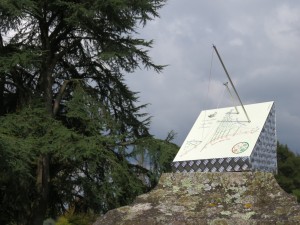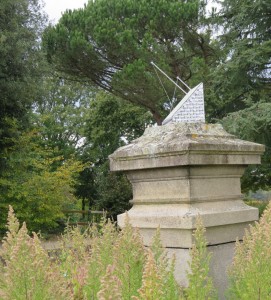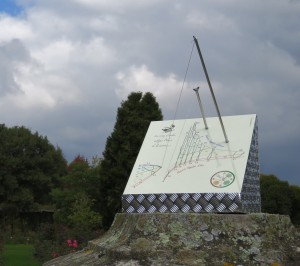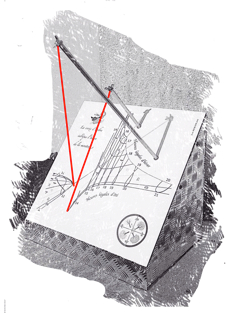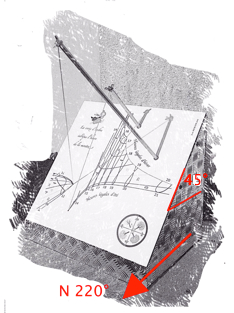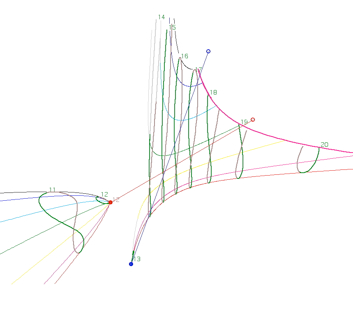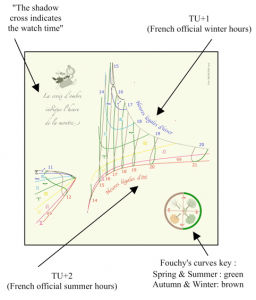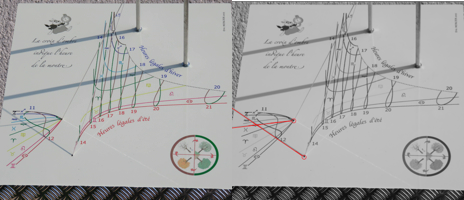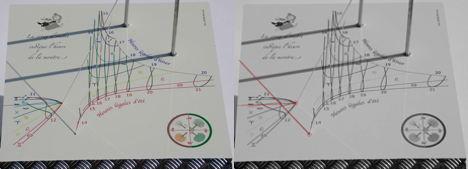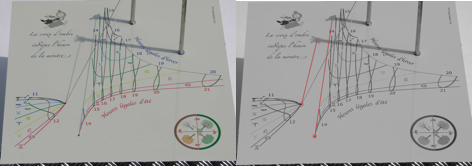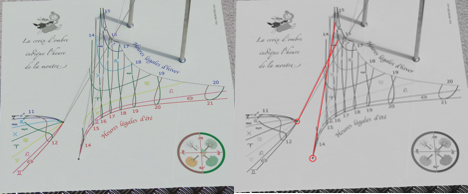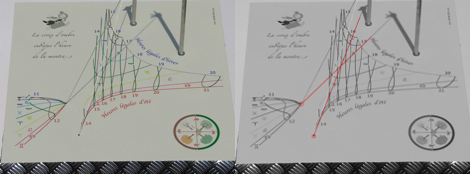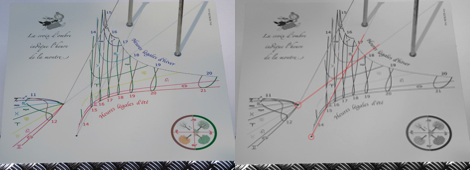In 1922, Professor Hugo Michnik, invented the bifilar sundial. In the original version, the bifilar sundial has two non-touching threads parallel to the horizontal dial. The second thread is orthogonal to the first. The intersection of the two threads’ shadows gives the local apparent time.

Michnick’s bifilar sundial (Wikipedia)
In sundial proposed here, the table is declinining and inclined, and threads are non-parallel to the table and non-perpendicular each other.
The threads: non-singular positions
The table: declining & inclined
This dial is designed with an original software (HUGO, in homage to Professor Hugo Michnik) described in two French-language papers published in “Cadran-Info” (co-author: Dominique Colin).
Download:
Note: The software version used here is newer and better than the one described in papers because it takes into account the threads length.
Software output: grey lines are hour lines position in the case of threads became longer.
The sundial table
October 11, 11h30 (TU+2) threads shadows in red
October 12, 12h00 (TU+2) threads shadows in red
October 12, 13h00 (TU+2) threads shadows in red
No cross !
October 11, 15h00 (TU+2) threads shadows in red
Cross is back !!
October 12, 16h00 (TU+2) threads shadows in red
October 12, 17h00 (TU+2) threads shadows in red
Sorry, no more sun in this place, in October !
